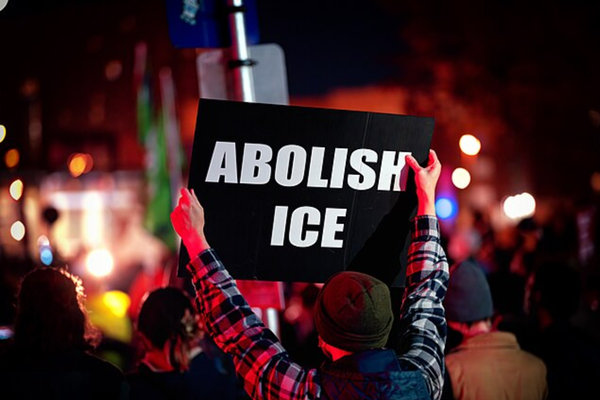

The Paris 2024 Olympics are right on our doorstep, so why don’t we get into the sporty spirit by unpacking the iconic logo, and what the Olympic rings symbolise.
IDK about the rest of y’all, but the Olympic rings are so bloody nostalgic to me. I remember when the Athens 2004 Olympics rolled around and I spent the majority of my Year One days learning about the Summer Games.
And let’s be real, the lessons involved us doing some form of Olympics-themed colouring in and singing along to Disney’s Hercules “I Can Go The Distance”. IYKYK.
So, to get into the Olympics spirit, I’ve decided to go back to my Year One roots and unpack the history of the Summer Games, and most importantly, what the Olympic rings symbolise.

The history of the Olympic Games
To get into the depths of what the history of the Olympic Games holds, it is believed that the commencement of the games dates back to 776 BC, when time was measured in Olympiads, per the Olympics website.
The Olympic Games were held every four years to honour the god Zeus, and it ranged from a variety of activities involving music, singing and poetry. I would imagine it would be like Eurovision but on a smaller scale!
It’s even reported that the theatre portion of the events were held in a separate event called Phythian or Delphic Games, which I reckon I could win gold in with my customer service voice.
Put me in coach!!
However, the games came to a halt in 393 AD when Roman Emperor Theodosius I banned the games for religious reasons.
The Olympic Games were revived eons later, with the first Summer Games of the modern era taking place in Athens in 1896.
What brings the Paris 2024 Olympics back to its founding roots is the fact that the idea of the event was brought to life by Frenchman Baron Pierre de Coubertin, who organised the first Olympic Congress in 1894.

Per the Olympics website, it was this set of principals and beliefs that lit the mini Olympic torch in Pierre de Coubertin’s (and the Olympic movements’) hearts:
- “Promoting the development of the physical and mental qualities that form the foundation of sport;
- Educating young people through sport in a spirit of mutual understanding and friendship with a view to help build a better, more peaceful world;
- Sharing the Olympic ideals with the whole world and creating an international sense of goodwill; and
- Bringing together athletes from all over the world for a major celebration of sport every four years, the Olympic Games.”
Some key dates include the Paris 1900 Olympic Games, which marked the first time women were allowed to compete in the event and the St Louis 1904 Olympic Games, which was the first Games to distribute the gold, silver and bronze medals.
The history of the Olympic rings
OK, but learning about the Olympic rings is my favourite part of primary school days. I only like the colouring-in part!!!
For folks who are not familiar with what the heck Olympic rings are, the symbol features five interlocked rings that are in five different colours, blue, yellow, black, green and red.
Peep below to see an example!

The Olympic rings were created by the Frenchman himself, Coubertin, who drew the symbol on top of a letter in 1913.
“These five rings represent the five parts of the world now won over to Olympism and ready to accept its fertile rivalries. Moreover, the six colours thus combined reproduce those of all the nations without exception,” the modern-day Olympics founder wrote.
What do the Olympic rings mean?
According to the Olympics website, the rings have a combined meaning of expressing “the activity of the Olympic Movement” and the “union of the five continents and the meeting of athletes from throughout the world at the Olympic Games.”
However, the Olympics website states that the colours do not “correspond to a certain continent,” stating that the time when Pierre de Coubertin made the rings, in combination with the white background, did represent “colours of the flags of all nations at that time”.
SIDE NOTE: My favourite recreation of the rings was definitely the Beijing 2008 Olympic Games, where the mascots — Beibei, Jingjing, Huanhua, Yingying and Nini — not only corresponded to the five natural elements, but were also a representation of the Olympic rings.

Super cute!!!
How have the Olympic rings changed over time?
1913
As mentioned previously, the rings first made an appearance on top of a letter written by Coubertin. This is the first time the Olympic Rings were shared publicly.
The Olympic Rings by Pierre de Coubertin, 1913.
— Logo Histories (@logohistories) May 8, 2022
Read here: https://t.co/jsV0gBQcDR pic.twitter.com/d0mTnaxQsh
(NGL, loved the scrap booking vibes this gives.)
1914
The Olympic Rings then made an appearance in 1914 on the official Olympic Flag. This was created in celebration of the 20th Anniversary of the Olympic movement.
1920
The Olympic Rings made its first appearance at the Antwerp 1920 Games. The rings were presented on the Olympic Flag, which featured a white background and the five interlocked multicoloured rings.
1957
The International Olympic Committee (IOC) approved a “specific version” of the rings, slightly altering how the rings interlocked with each other.
The change can be viewed here.
1986
Following the slight change, the IOC Graphic Standards featured a specific description of how the Olympic Rings should be produced.
2010
Yonks later, the IOC Executive Board officially changed the Olympic rings, restoring them to Coubertin’s OG design.

Looking back at the history of the Olympic Games, I wish they brought back the singing part. Kylie Minogue, I summon you RIGHT NOW.
But, at least the dancing part will be revived via the breaking comp! Can’t wait to see what Aussie breakers Rachael Gunn and Jeff Dunne serve up.
Image source: Getty Images / Scott Halleran
The post The Olympic Rings Are More Than A Trendy Tattoo For Athletes: Here’s Their History & True Meaning appeared first on PEDESTRIAN.TV .







